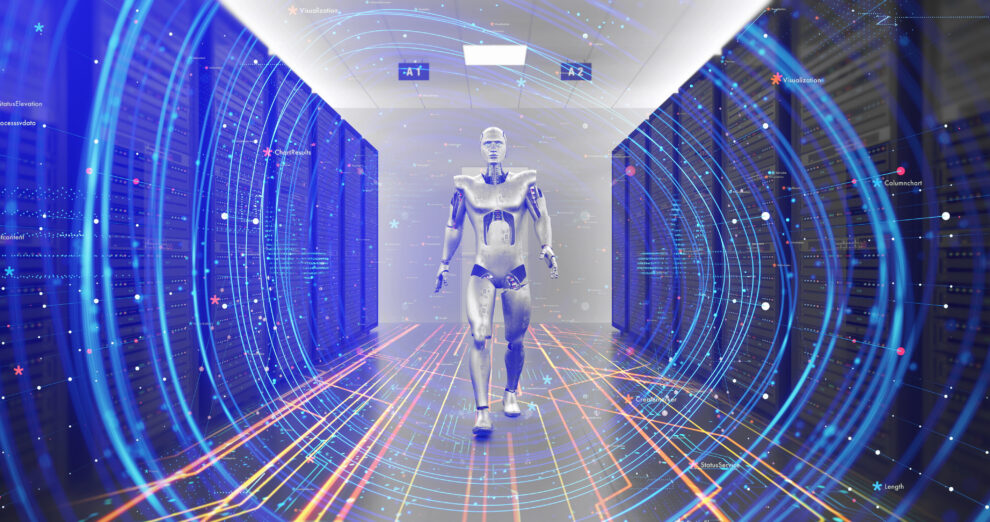Tesla’s next big opportunity has nothing to do with its cars.
Marketing is one of the hardest things to do in business. At its core, marketing is a form of storytelling. If brands fail to craft compelling stories, then it’s hard to resonate with consumers.
One company that notably doesn’t rely on hefty advertising, however, is Tesla (TSLA 0.58%). Despite intense competition, Tesla has one thing that none of its competitors do. And no, I’m not talking about more sophisticated technology or loads of intellectual property (IP).
I’m talking about the company’s outspoken CEO, Elon Musk. Very few leaders in the business world command the same kind of presence as Musk. No matter the context, it seems that the world listens nearly every time Musk opens his mouth.
Recently, Musk posited the idea that Tesla is staring down a $200 trillion opportunity called Optimus. The best part? It has nothing to do with the company’s core electric vehicle (EV) business.
Let’s dig into Musk’s remarks and explore how real the opportunity is.
What is Tesla Optimus?
Most people are familiar with Tesla because of the company’s EVs. But what you may not know is that Tesla also has several ambitions in the realm of artificial intelligence (AI).
One of the company’s biggest AI projects revolves around humanoid robotics, which it calls Optimus. Essentially, Tesla is using machine learning to train human-sized robots on how to perform basic tasks.
The vision is that Optimus bots will become handy enough to supplement the human workers in Tesla’s factories.

Image source: Getty Images.
A $200 trillion market?
During Tesla’s second-quarter earnings call, Musk doubled down on his bullish outlook for Optimus when he proclaimed, “As I’ve said before, I think Optimus will be more valuable than everything else combined.”
In the video below, Musk explains his perspective on Optimus and its potential to be a $200 trillion business:
ELON: THE OPTIMUS NUMBERS ARE SO MIND-BLOWING THAT THEY DON’T LOOK REAL
“The Optimus numbers, they’re so mind-blowing that you’re like, is this real?
I actually think the market for humanoid robots is in excess of 10 billion units, more than the number of humans.
Because… pic.twitter.com/EjyqHab4Zi
— Mario Nawfal (@MarioNawfal) July 31, 2024
The bottom line
Although Musk’s comments may inspire some excitement, there are some important caveats to review here.
First, Tesla is far from the only company pursuing humanoid robotics. One of Tesla’s biggest competitors in the space is Figure AI, a start-up backed by Nvidia, Intel, and Microsoft.
According to its website, Figure AI envisions a future in which humanoid robots are fully integrated into society, playing a major role in logistics, warehouse labor, retail, and even elderly care. Figure AI estimates that disrupting manual labor at scale could be a $42 trillion addressable market.
Beyond Optimus and Figure AI, other major players in humanoid robotics include Boston Dynamics, 1X, and a litany of start-ups in China. Given this level of attention, it’s not entirely surprising that Goldman Sachs outlines humanoid robotics as a $38 billion market just by next decade.
The second point investors need to realize is that the total addressable market for humanoid robotics is all over the place, ranging from tens of billions to hundreds of trillions. While a time line for Optimus’ scale to 10 billion units wasn’t revealed, I think having more humanoid robots than people on Earth is quite a bold idea.
However, investors shouldn’t get too caught up with the specifics of the forecast. With commercialization of Optimus slotted for just two years away, investors may know sooner than later what demand starts to look like.
It’s too early to tell if humanoid robots will be a success and if Optimus will be a leader in the space. But just like Tesla’s other products, Musk has done a stellar job of marketing the opportunity around Optimus and getting investors excited about the road ahead.
Adam Spatacco has positions in Microsoft, Nvidia, and Tesla. The Motley Fool has positions in and recommends Goldman Sachs Group, Microsoft, Nvidia, and Tesla. The Motley Fool recommends Intel and recommends the following options: long January 2025 $45 calls on Intel, long January 2026 $395 calls on Microsoft, short August 2024 $35 calls on Intel, and short January 2026 $405 calls on Microsoft. The Motley Fool has a disclosure policy.





